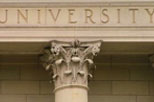UQ transfers supercomputer savvy to virtualisation

The University of Queensland has opened a new in-house-designed datacentre, using the university IT team's knowledge of supercomputer power and cooling requirements to deal with the trials of virtualisation.

After years of running supercomputers, Nick Tate, director of the University's IT services, can testify they run hot and power-hungry. As a result, the university has created special power and cooling arrangements to tackle the heat problem, such as cooling equipment directly as opposed to cycling air aimlessly into a room.
Now the university has just opened a new highly virtualised datacentre, it's facing similar power and cooling requirements with virtualisation meaning each server is running towards full capacity.
The university was able to use its supercomputer experience to develop efficient methods of powering and cooling the new datacentre, Tate said: "We took some of the things that we've used in that environment and put them into the datacentre."
The 90-square-metre datacentre, which opened earlier this month, also incorporates battery-powered cooling, so that if both backup and mains power fail, the datacentre won't go into meltdown, giving time for staff to turn systems off. Some racks have blanking panels — metal panels which direct the cool airflow along the front of the servers where the cooling intake is. The centre also makes use of hot and cold aisles, with intakes from one row of servers facing intakes of the row of servers next to it.
The servers in the datacentre are currently largely x86s, Tate said, with 42 units in each rack.
The datacentre plays an important disaster recovery function for the university, Tate said, holding its mission critical data. "There are no paper enrolment forms for uni, lectures are online, courses are available online, university research systems connect constantly to other universities," he said.
IT staff won't have to be at the new datacentre to keep an eye on it too: "We've been setting it up so we monitor it remotely," Tate said.
UQ's IT head hopes the datacentre improvements will be employed when UQ replaces its primary datacentre — the first datacentre in Queensland — at the end of its 25-year life.